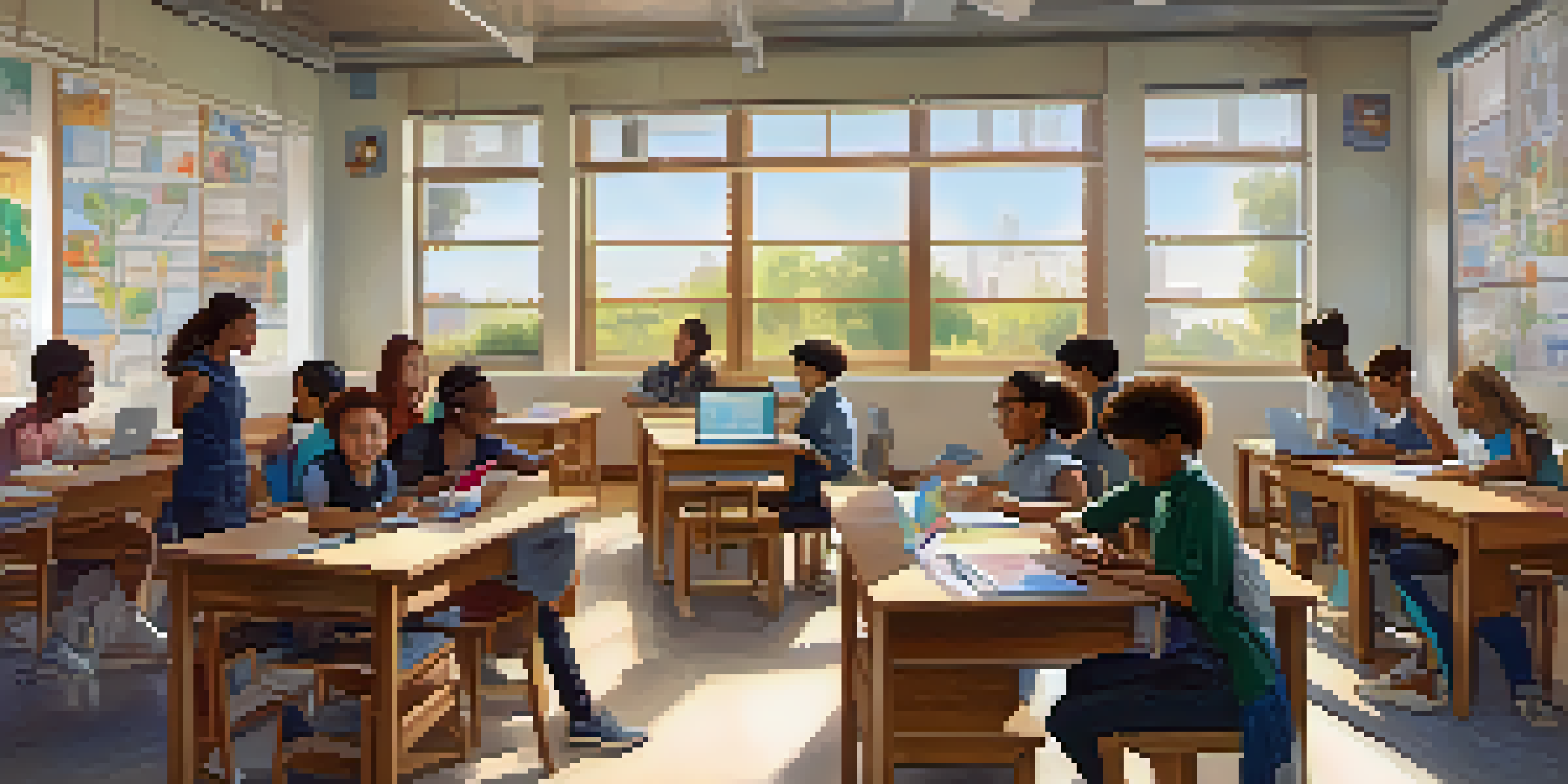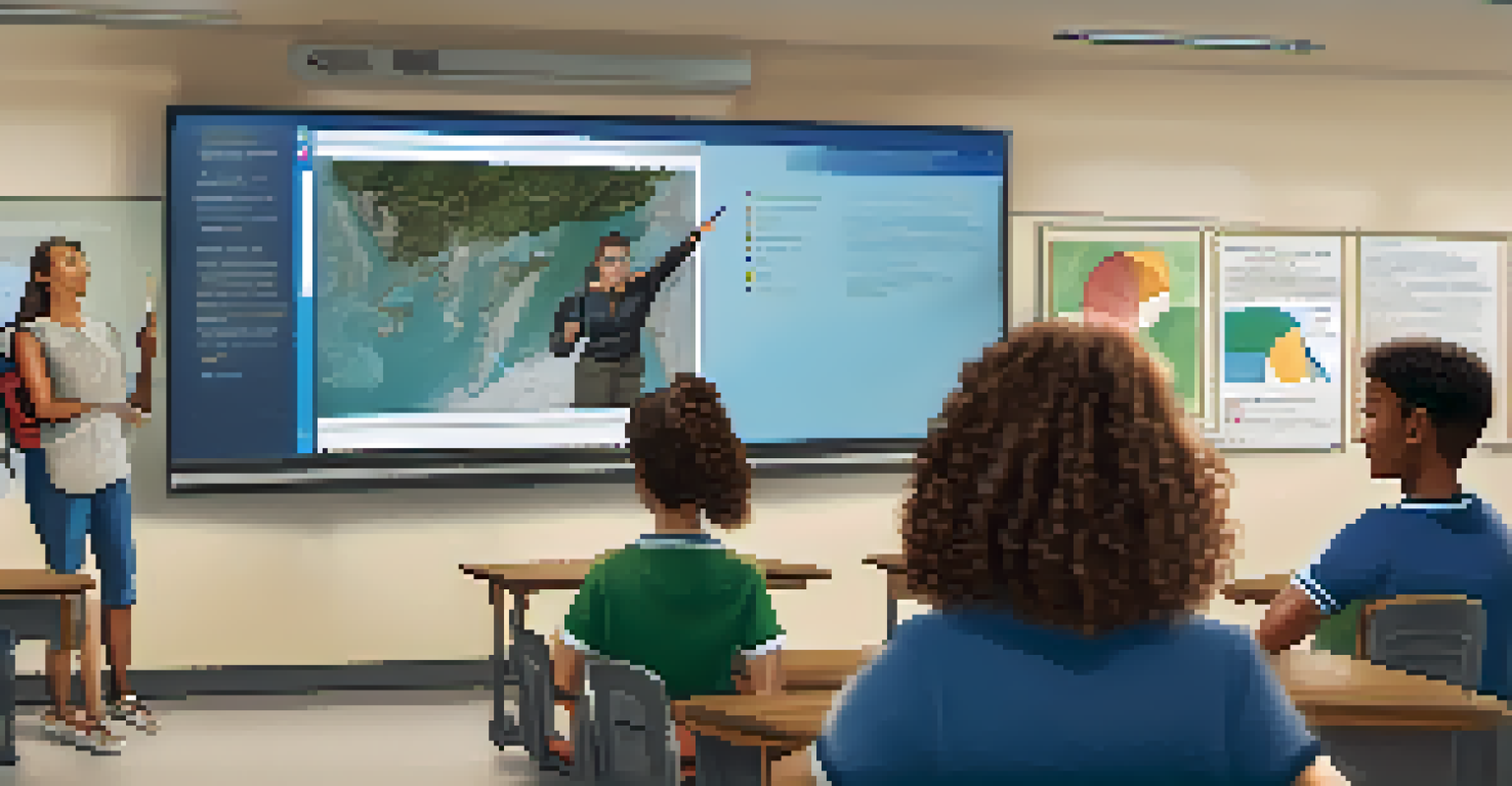Investigating Gender Differences in Blended Learning Outcomes

Understanding Blended Learning: A Brief Overview
Blended learning combines online and face-to-face instruction, creating a flexible learning environment. This approach allows students to enjoy the benefits of both traditional classroom settings and digital learning platforms. As education evolves, understanding how different demographics adapt to blended learning becomes crucial, especially in examining gender differences.
The future of education is not only about technology, but also about understanding the diverse needs of our students.
In blended learning environments, students typically engage in self-paced online work, supplemented by in-person sessions. This setup can cater to diverse learning styles, potentially impacting how male and female students perform. By recognizing these differences, educators can better tailor their approaches to meet the needs of all learners.
Research indicates that gender can influence learning preferences and outcomes. For instance, studies have shown that female students often excel in collaborative and communication-based tasks, while male students may thrive in competitive settings. This insight leads us to investigate how these tendencies play out in blended learning contexts.
The Role of Gender in Learning Preferences
Gender differences in learning preferences can significantly affect student engagement and success in blended learning environments. For example, female students may prefer collaborative projects, while male students often favor independent tasks. Understanding these preferences is essential for creating inclusive learning experiences.

Additionally, research suggests that female students often prioritize social learning and seek meaningful connections with peers and instructors. In contrast, male students might focus more on task completion and competitive achievement. These patterns can influence how each gender interacts with online platforms and in-person components of blended learning.
To enhance blended learning outcomes, educators must consider these differences when designing courses. By incorporating elements that appeal to both genders, such as group activities for females and competitive elements for males, educators can foster a more balanced learning environment.
Examining Academic Performance by Gender
Academic performance is a critical metric for assessing the effectiveness of blended learning. Studies have shown that male and female students may perform differently in various subjects and learning contexts. Understanding these performance trends can help educators refine their teaching strategies.
Inclusion is not a matter of political correctness; it is the key to growth.
For instance, female students often demonstrate stronger performance in subjects that require verbal skills and collaboration. Conversely, male students may excel in subjects that emphasize logical reasoning and problem-solving. These differences can become more pronounced in blended learning settings where students have the autonomy to navigate their learning paths.
By analyzing academic performance data, educators can identify patterns and address potential disparities. This insight can lead to targeted interventions, ensuring that all students, regardless of gender, achieve their full potential in blended learning environments.
The Impact of Technology on Learning Outcomes
Technology plays a pivotal role in blended learning, influencing how students engage with content and interact with peers. However, gender differences in technology use can affect learning outcomes. For example, male students may be more comfortable with technology, leading to higher engagement levels in online components.
Conversely, female students might experience barriers to technology use, which can hinder their participation. This disparity highlights the need for educators to provide adequate support and training to ensure all students can leverage technology effectively. By addressing these barriers, educators can create a more equitable learning environment.
Moreover, understanding how different genders interact with technology can inform course design. For example, incorporating user-friendly platforms and offering tech training sessions can enhance engagement for all students, ultimately improving blended learning outcomes.
Developing Gender-Inclusive Teaching Strategies
To foster equitable blended learning environments, educators must develop gender-inclusive teaching strategies. This involves recognizing and addressing the unique needs and preferences of male and female students. By creating a balanced approach, educators can enhance the learning experience for everyone.
One effective strategy is to incorporate diverse teaching methods that cater to various learning styles. For example, combining collaborative group work with competitive activities allows both genders to thrive. Additionally, providing opportunities for peer feedback and interaction can encourage all students to engage more deeply with the material.
Moreover, ongoing assessment and feedback are essential for refining teaching strategies. By regularly soliciting input from students about their experiences, educators can make necessary adjustments to ensure that blended learning remains effective and inclusive for all.
Insights from Research on Gender and Learning Outcomes
Recent research has shed light on the intricate relationship between gender and learning outcomes in blended environments. Studies have shown that when gender differences are acknowledged and addressed, students are more likely to succeed. This underscores the importance of ongoing research in this area.
For example, some studies suggest that female students perform better when they have access to mentorship and support networks. In contrast, male students may excel in environments that promote autonomy and self-direction. Understanding these nuances can help educators design more effective blended learning experiences.
By leveraging research findings, educators can implement evidence-based practices that support students across genders. This proactive approach not only improves learning outcomes but also fosters a more inclusive educational landscape.
Conclusion: Moving Towards Equality in Education
Addressing gender differences in blended learning outcomes is crucial for creating equitable educational experiences. By understanding and responding to the unique needs of male and female students, educators can enhance learning and foster success for all. This commitment to equity should be a cornerstone of modern educational practices.
As we move forward, it's essential to prioritize ongoing research and dialogue around gender and learning. By staying informed about emerging trends and best practices, educators can adapt their approaches and ensure that all students thrive in blended learning environments.

Ultimately, the goal is to cultivate a learning atmosphere where every student feels valued and empowered. By embracing diversity and inclusivity, we can pave the way for a brighter future in education.